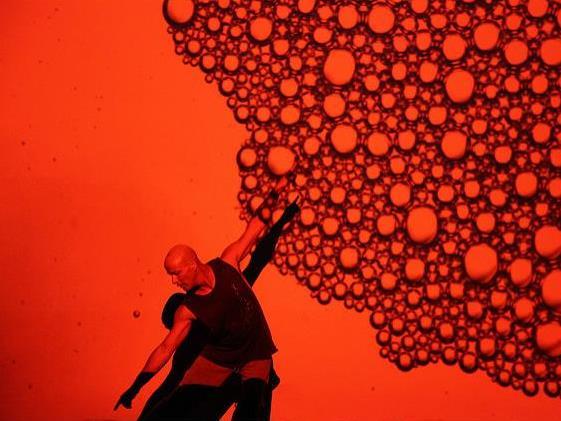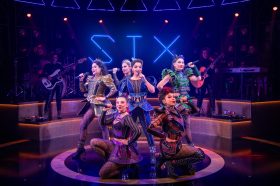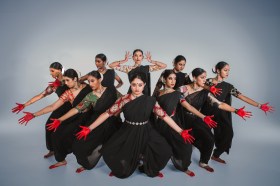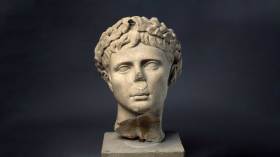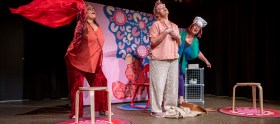Image: Blood on the Dance Floor, ILBIJERRI Theatre Company. Credit: Dorine Blaise.
The recent Showcasing Creativity research revealed just how rarely First Nations work is performed in Australia’s mainstream venues and festivals. In 2015 only 2% of the almost 6000 works programmed involved Indigenous artists.
The Australia Council for the Arts research mapped First Nations performing arts programming in 2015 seasons and explored the motivations and obstacles from the perspective of those who facilitate works being made public and promoting works to audiences: presenters (venues and festivals) and producers (those that sell or represent First Nations arts to presenters).
One of the primary obstacles to presenting more work by First Nations people in Australian theatres and festivals is the view that these productions are financially risky.
‘While presenters thought the “brand name” First Nations works were too expensive, they found the smaller works financially risky because of the lack of brand recognition,’ said Lydia Miller Executive Director Aboriginal and Torres Strait Islander Arts, Australia Council for the Arts.
Another barrier to programming is a fear of getting the process of selecting, staging, presenting and marketing works ‘wrong’.
But the research also revealed considerable opportunities for art organisations to move towards programming more Indigenous work with a growing public interest, an ability to reach new audiences and an opportunity to build sector capacity for cross cultural engagement.
Building new audiences
The Australia Council’s national Arts Participation survey shows, 92% of Australians agree that Indigenous arts are important but only 24% are attending these productions.
Most significantly, 64% of those surveyed expressed a strong or growing interest in seeing work by First Nations people. This is where a clear opportunity to promote and tell Aboriginal and Torres Strait Islander stories, and increase sector capacity to engage and diversify audiences.
Showcasing Creativity is the latest study in a series commissioned by the Australia Council with the aim of supporting the sector to close the gap between Australians’ interest and attendance in First Nations arts.
The previous study, Building Audiences, explored this from the perspective of audiences, both existing and potential. The Building Audiences research found that there are six key motivators for audiences to engage with First Nations art experiences: an attraction to stories, contemporary experiences, unique experiences, personal connections, and a desire for cultural insight and deeper understanding. Perceived barriers for audiences are uncertainty about how to engage, a lack of awareness or visibility of First Nations programming, and a ‘serious’ image.
Showcasing Creativity explored the gap from the perspective of those who facilitate works being made public and promoting works to audiences.
A third study will explore the creation of artistic works.
The national Arts Participation Survey will enable periodic tracking of Australians’ interests, attitudes and attendance, with the next edition fielded in late 2016.
As Miller explained, ‘The assumptions that presenters and programmers have, about work not selling or audiences not being interested, needs to be unpacked. They need to start to look at elements of marketing to do this, because what we have found is that those audiences who have attended, have enjoyed the experience.’
After looking more closely at the types of marketing messages that are used to promote new Indigenous works, the Australia Council found that programmers typically only speak to their existing subscriber base, rather than looking at ways to diversify that base and potentially engage a wider audience.
‘So even though the financial return for programmers or venues may not be there and therefore they don’t program as a result of that assumption, it’s actually because they may not have marketed to interested audiences outside of their existing subscriber audiences.’
‘Sometimes you do have to do active engagement with your audiences to develop real engagement with other material because they are generally getting their information from the public space, and they don’t know how to access First Nations works otherwise. When only 46% Australians surveyed in the Arts Participation survey stated that Indigenous arts was well represented, they were correct. This is a question of access for Australian audiences.’
Don’t make assumptions
Audiences have a strong image of First Nations arts as ‘traditional’. ‘Yet most of the performing art events that have toured, including the successful ones like Head Full of Love, have dealt with contemporary themes,’ said Miller.

Queensland Theatre Company, Head Full of Love by Alana Valentine; Image by Amanda James. Toured through Blak Lines.
She urges presenters not to underestimate audiences by assuming they are unwilling to come to work that deals with tough contemporary Indigenous issues.
‘We’ve had feedback from presenters and programmers who felt unconfident to present work that dealt with contemporary issues, however they also started to talk about the role of the arts in stimulating a national conversation that overcomes conservatism or existing racism within particular communities,’ said Miller.
‘But when these presenters say “this is not for our audiences”, they are in fact themselves perpetuating stereotypes about the work. Because those who have said, “Yes, we want to start a national conversation and yes the arts can stimulate this”, then that has led to truly exciting engagement. And invariably, when the audiences have engaged, they have found it quite stimulating.’
Talk to colleagues
Most people are finding out about new works through word of mouth and through their own networks, said Miller. So it really is about starting a conversation with colleagues.
‘If people are unconfident or they are not quite sure where to start, then it’s about having a conversation with your colleagues within the industry who have successfully programmed, and being able to develop a model that enables you to really start to say, “ok, we’ll look at this as a commitment from our venue, we’ll start to look at this in terms of investing.”
Engaging with your colleagues includes First Nations theatre companies such as Ilbijerri in Melbourne, Yirra Yaakin in Perth and Mooghalin in Sydney, as well as the peak bodies such as BlakDance, National Indigenous Theatre Forum and the National Indigenous Festivals network. You can also talk with Blak Lines and Performing Lines. You can also try the Australian Performing Arts Market (APAM), The Australian Performing Arts Centres Association Performing Arts Exchange, or existing companies that are generating new work. ‘That’s a critical engagement for people to understand how they can get to see works,’ said Miller.
Make a commitment
Miller mentioned the touring initiative Blak Lines as one example of regional and metro venues working together to create new opportunities for contemporary Aboriginal and Torres Strait Islander dance and theatre to be presented across Australia.
‘Those venues who have engaged Blak Lines have actually been extraordinary in terms of agreeing to tour work and start to grow their audience base,’ said Miller.
‘You can either commission a work, you can tour a work, you can present a work or you can basically enter into partnerships where you start to co-commission various kinds of communities or states. There are lots of options.’

